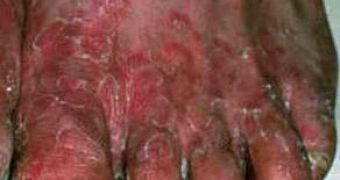1. In Eastern Europe and Italy, mushroom harvesting is a tradition, and the annual number of intoxication cases and deaths is high. Dishes based on wild mushrooms are something common, but there are about 250 species of toxic mushrooms growing in Europe. The most dangerous are death cap (Amanita phalloides) and destroying angel (Amanita virosa), which can cause death if ingested.
2. Which is the world's largest living organism? You will be tempted to say something you can see: the blue whale in the case of animals or the sequoia tree when it comes to plants. But you're wrong: it is something you do not even see, but it slowly grows for thousands of years. It's an enormous tree killer called honey mushroom (Armillaria ostoyae).
The huge root-rot mushroom is 2,400 years old and has spread over 2,200 acres (8,9 square km) east of Prairie City in a remote corner of eastern Oregon's Blue Mountains at an altitude of about 6,500 feet (2,160 m). Some say it could be 8,000 years old. Honey mushrooms are more known as culinary delicacies. The underground fungus spreads its shoestring-like tentacles (rhizomorphs), covering tree roots. Its sheer mass could be even bigger than the currently estimated area. DNA fingerprinting and vegetative pairing showed that this was a single organism and the biggest living thing on Earth. This fungus uses the roots of one tree to pass to another. It causes a root disease that kills the trees.
3. From about 4,400 species of fungi found in Europe, one third are close to extinction. The causes: contamination and overexploitation. Many species of insects and trees depend on fungi, and their disappearance could affect them, too. Most trees survive due to their symbiosis with fungi, done through their root, a relation called mycorrhize: the mushrooms' mycelia offers the tree water and mineral salts and receives food.
4. In the western world, over 20% of the people have a fungus infection called Athlete's Foot (Tinea pedis). The highest risk is posed by closed and humid spaces where people walk bare-footed, like sauna, swimming pools, and even some religious edifices. So, use flip-flops, keep your feet dry. Take care of the space between your toes!

 14 DAY TRIAL //
14 DAY TRIAL //